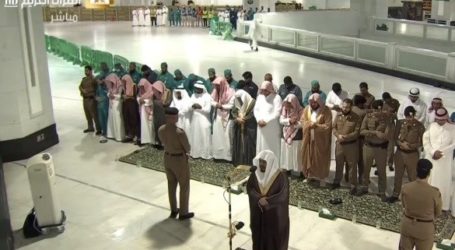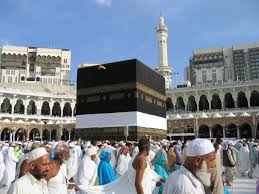GUARD OF HAJAR ASWAD ADMITS HE IS PROUD OF HIS JOB

 Makkah, 24 Ramadan 1434 / 1 August 2013 (MINA) – A sergeant stone guard of Hajar Aswad, very proud and happy with his job at the Grand Mosque, Makkah. Sergeant’s Hamad Al-Sharif said that the job made close to the house of God, the Saudi Gazette quoted by Mi’raj News Agency (MINA) as reporting, Thursday. Al-Sharif’s duty is to stand guard next to Al-Hajar Al-Aswad, the Black Stone in the Holy Ka’ba, so as to coordinate thousands of pilgrims who want to touch the stone.
Makkah, 24 Ramadan 1434 / 1 August 2013 (MINA) – A sergeant stone guard of Hajar Aswad, very proud and happy with his job at the Grand Mosque, Makkah. Sergeant’s Hamad Al-Sharif said that the job made close to the house of God, the Saudi Gazette quoted by Mi’raj News Agency (MINA) as reporting, Thursday. Al-Sharif’s duty is to stand guard next to Al-Hajar Al-Aswad, the Black Stone in the Holy Ka’ba, so as to coordinate thousands of pilgrims who want to touch the stone.
Al-Sharif, who has been guarding the Black Stone for 30 years, does not want to leave his job. He says the emotions of the pilgrims who touched and kissed the stone are deeply moving. The most precious thing, he said, was “a heartfelt prayer from a pilgrim I helped touch the Black Stone.” Head of the Grand Mosque Security Forces Major Gen. Yahya Al-Zahrani said the Black Stone guard’s duty is to coordinate those who want to touch or kiss the stone.
The guard should prevent anyone who has touched the stone from coming back, to give as many pilgrims as possible the opportunity to get close to it. “There are a number of guards who take shifts guarding the Black Stone,” Al-Zahrani said.
The Black Stone
The Black Stone (Hajar Aswad) is the eastern cornerstone of the Kaaba, the ancient stone building toward which Muslims pray, in the center of the Grand Mosque in Mecca, Saudi Arabia. It is revered by Muslims as an Islamic relic which, according to Muslim tradition, dates back to the time of Adam and Eve. The stone was venerated at the Kaaba in pre-Islamic pagan times. It was set intact into the Kaaba’s wall by the Islamic prophet Muhammad in the year 605 A.D., five years before his first revelation.
Since then it has been broken into a number of fragments and is now cemented into a silver frame in the side of the Kaaba. Its physical appearance is that of a fragmented dark rock, polished smooth by the hands of millions of pilgrims. Islamic tradition holds that it fell from Heaven to show Adam and Eve where to build an altar. Although it has often been described as a meteorite, this hypothesis is now uncertain. Muslim pilgrims circle the Kaaba as part of the Tawaf ritual of the Hajj. Many of them try, if possible, to stop and kiss the Black Stone, emulating the kiss that Islamic tradition records that it received from Muhammad. If they cannot reach it, they point to it on each of their seven circuits around the Kaaba. (T/P09/E1).
Mi’raj News Agency (MINA).






